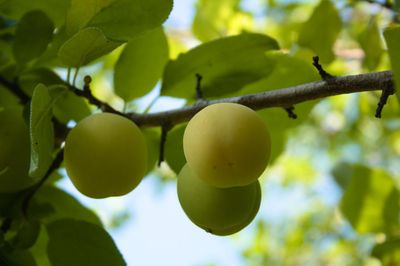What is a Willingham Gage?
The fruit is a type of greengage plum, but this information won’t help you unless you are familiar with the greengage. A greengage plum is a type of fruit tree imported to England from France by Sir Thomas Gage. What makes a plum a greengage? Don’t rely on the color to help you. Some greengage plums are green, but some are purple and some are yellow. Some say that you can only distinguish between a gage and a plum by tasting it rather than by its outward appearance. If you bite into a plum and find it deliciously sweet and very juicy, it is probably a greengage. In fact, it might be a Willingham gage. Those growing Willingham gages say that the green plums are utterly delicious, extremely sweet with an almost melon-like flavor. Willingham gage trees are known for their reliable harvest and great-tasting fruit. They are also reputed to be low-maintenance and easy to grow. In fact, the care for Willingham gage trees is neither complicated nor time-consuming.
How to Grow Willingham Gage Fruit
You’ll have to consider many factors when you are learning how to grow Willingham gage trees. One of the first questions is whether you need to plant another compatible plum tree nearby to get fruit. The answer is not clear. Some report that the trees are self-fertile, meaning that you don’t require a second plum tree of a compatible species nearby to produce crops. However, others call Willingham cage trees self-sterile. So, go ahead and plant a second tree in the pollinator group D. It never hurts to have another type of plum nearby and could aid fruit production. Care for Willingham gage trees is similar as for other plum trees. These trees require a sunny site that gets six to eight hours of direct sun a day. They also need well-draining soil and adequate, regular irrigation. Expect Willingham gage trees to flower in spring. You will harvest fruit from these trees in midsummer.
